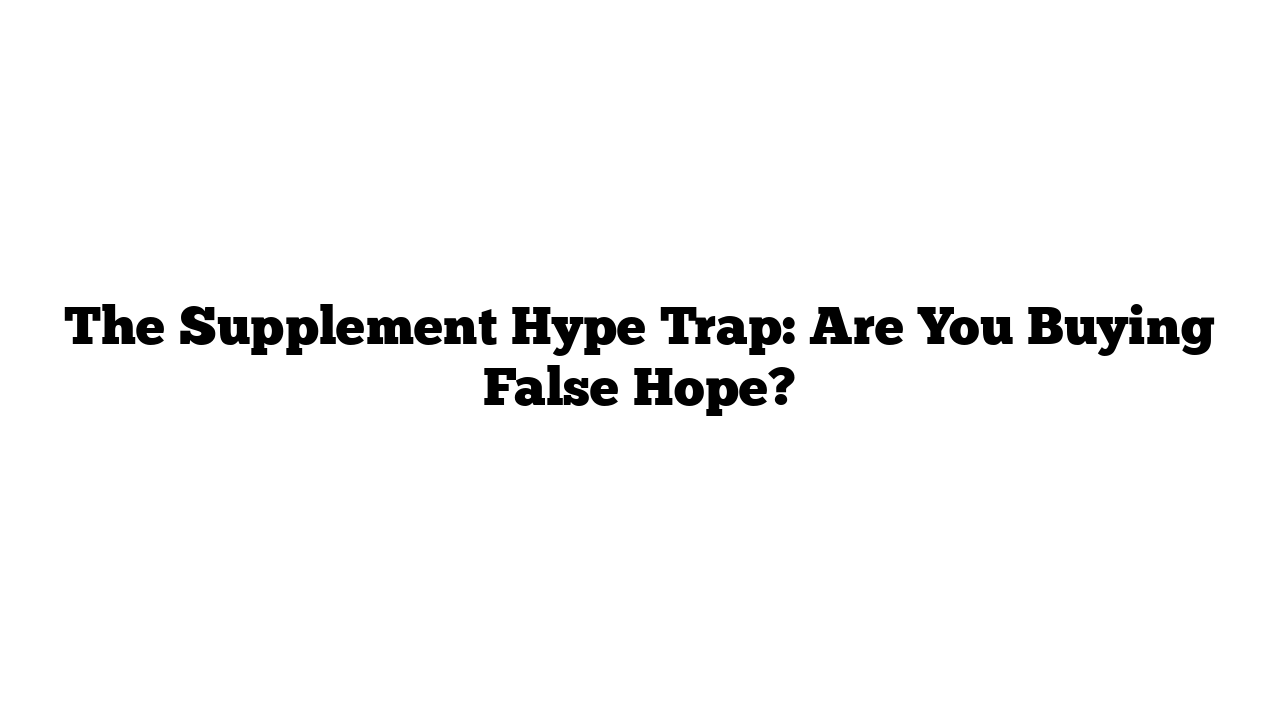Have you ever felt like you’re being sold false hope in a bottle? For many of us, that’s exactly what the supplement industry is doing. Despite flashy claims, the evidence behind many supplements is often thin or misleading. In this breakdown, we’ll go through the four-step hype cycle that companies use to keep people hooked. You’ll learn how to spot empty claims and choose supplements with real benefits.
Let’s dive into the vicious cycle.
Step 1: Promoting Non-Clinical or Animal Research
The hype cycle often begins with research that’s interesting but not directly applicable to humans. Imagine a lab study that finds a certain compound can extend the life of cells in a petri dish or improve health in animals. This is exciting, but jumping from petri dishes and animal studies to actual human benefits is a huge leap. Just because a supplement works on cells or in animals doesn’t mean it will work the same way for us.
Real-Life Example: The Case of C-15 Fatty Acids
Take the example of “Fatty 15,” a supplement based on research with dolphins. Scientists observed that dolphins with high levels of a fatty acid called C-15 seemed to resist aging-related conditions. While intriguing, dolphins have different biology than humans. Assuming that C-15 will have the same benefits for humans is like using a new cake ingredient and expecting it to taste great in a stew.
Step 2: Launching a Company Without Human Evidence
Armed with promising but preliminary research, the next step is to create a supplement company. This is where the big sales push happens, often before there’s solid human evidence. The goal is to make quick sales based on buzz. For example, Fatty 15 was quickly brought to market without thorough human studies. The company banked on initial excitement, even though there was little evidence of its effects on people.
Step 3: Building Credibility Through Media Exposure
To give these products credibility, companies often use media appearances, podcasts, and TedX talks. These platforms create a polished story around the supplement, but just because a product is discussed on stage doesn’t mean it’s backed by real science.
A Closer Look at Claims
Many companies highlight “human studies,” but these may be small, inconclusive, or presented in a misleading way. For example, Fatty 15 claims benefits for liver health and blood sugar regulation, yet their own studies didn’t show significant results when all data was analyzed. It’s easy to shape results to make them seem more impressive than they are, but a closer look often reveals no real difference.
Step 4: Raking in Profits Before the Science Catches Up
By this stage, the hype is in full swing, and the supplement is presented as a breakthrough that can solve all kinds of health problems. The rush to make sales often outpaces scientific research. Once people start questioning the claims, the focus shifts to the next big thing, leaving people who bought into the hype with little more than an expensive placebo.
How to Find Supplements That Actually Work
Not all supplements are created equal, and some do have proven benefits. To avoid falling for the hype, follow these tips:
- Check for Solid Research: Look for human studies, preferably randomized controlled trials, which are the gold standard for proving effectiveness.
- Use Reliable Sources: Websites like ConsumerLab.com offer unbiased reviews and research summaries to help you find quality supplements. The NIH Supplement Database is another trustworthy source.
- Stay Skeptical of Big Claims: If it sounds too good to be true, it probably is. Health improvements often come from a combination of good diet, exercise, and lifestyle, not a single supplement.
By understanding the hype cycle, you can protect your health, save money, and make choices based on facts rather than flashy marketing. Real health improvements come from sustainable lifestyle changes—not empty promises in a pill.
